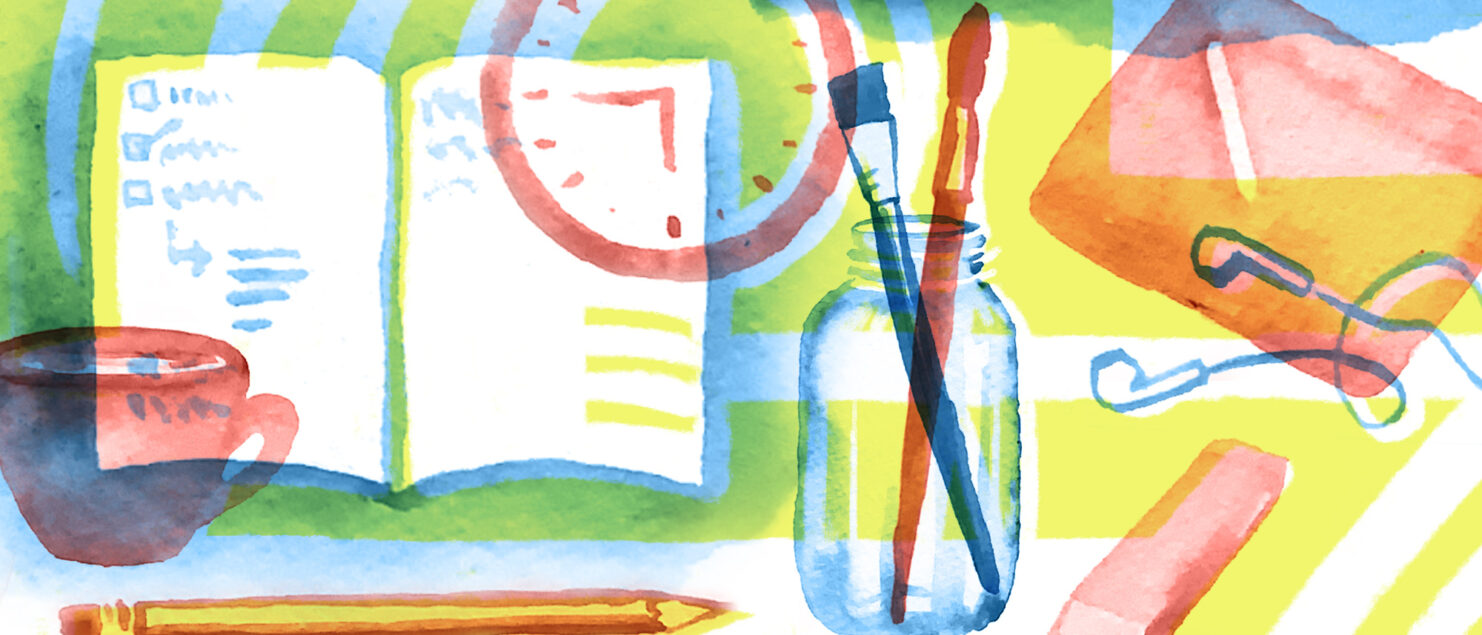LESSONS LEARNED FROM MY FIRST 6 MONTHS AS A FREELANCE DESIGNER
When I quit my full-time job back in May, I had already been working at home for three months due to the pandemic. In some respects, beginning to freelance didn’t feel that different. I still got up in the morning and made my way to my home office with a cup of tea to start the day. But, instead of logging in and receiving a list of tasks, I had to figure out how to direct my time. This new freedom was both exciting and overwhelming. I’ve put together a list of strategies that helped me as I was starting out. Hopefully they can help you too!
Give yourself some time to get your portfolio in good shape.
I spent the better part of a month updating my website. This is definitely the first step to figure out before you start reaching out to people. It doesn’t have to be perfect, but you should make sure your work is current and that it’s something you’re proud of. This is also a good opportunity to think about how you want to talk about yourself and what you do, which will make it easier when you’re talking to potential clients.
Start spreading the news.
No one can hire you if they don’t know what you’re offering. I started by reaching out to people I’d worked with in the past to let them know that I was now more available, and found my first few jobs that way.
Research potential clients and reach out to them.
I was shocked when my first few inquiries yielded actual work. Most people I’ve reached out to sent a kind response even if they didn’t have work for me at the moment. Reach out to clients that you’d be excited to work for and show them that you care. It’s helpful if you have some connection to them already. For example, maybe you’re a customer, a neighbor, you have a passion for the work they do, or you’ve met someone from their organization before.
Use time-boxes to keep yourself moving forward.
When working on your own, it can be easy to fall down a rabbit hole or make endless edits since no one is there to tell you when to stop. I found it helpful to give myself a set amount of time for those tasks. If I hadn’t finished by the end of the allotted time, I still took a break by going for a walk or switching to another project for a bit. When I returned, I was able to look at the first project with fresh eyes.
Many Projects take way longer than I expected to actually get started once the client expresses interest.
You need to figure out the details—budget, scope of work, and creative brief—which takes time. Also, the client may be waiting on information internally which delays the project. In some cases it was months before the project got going. It’s a good idea to look for your next few projects before your current one is over so you’re not left with too much downtime in between.
That being said, one of the benefits of freelancing is downtime!
Don’t forget to let yourself relax every once in a while. You can also use your downtime for personal projects or learning new skills. And make sure to share your work! These unpaid personal projects often lead to paid work farther down the line. As far as learning new skills, YouTube, Skillshare, and Lynda are great places to start. Even if you’ve been a designer for a long time, there are always new things to brush up on. I used some of my free time to learn After Effects and Procreate.
Books and podcasts are great too!
My favorite design podcasts are “The Honest Designer’s Show” and “Creative Pep Talk.” Both these podcasts are useful, inspiring, and often funny. Some books I’ve found helpful are “Win Without Pitching” and “Creative Strategy and the Business of Design.” There’s tons of advice out there, but remember that everyone’s situation is different. Don’t be afraid to do your own thing if it works for you.
Just because you have a flexible schedule, doesn’t mean you are always available.
Setting up boundaries with your partner or family can be helpful. My partner knows that I still try to be productive between the hours of 9-5. The time that I spend learning new skills or marketing my business is part of my job even if I don’t have an external deadline for that work. I also don’t usually do any work on the weekends. I make an exception once in a while if I feel like it, but make sure that this is your decision.
Be a nice boss.
One of the biggest challenges of working for yourself is finding a balance between being self-critical enough to keep up a good standard of work and quality for your clients and not being so self critical that you fall into a dark pit of despair and never get anything done.
Be patient.
No one expects you to reach all your goals right away. It takes time to build up a client base and focus in on what you’re good at. Of course, it’s much easier to be patient when you have some savings to help you through the transition, so I recommend building up those savings before you make the switch to full time freelance work.
